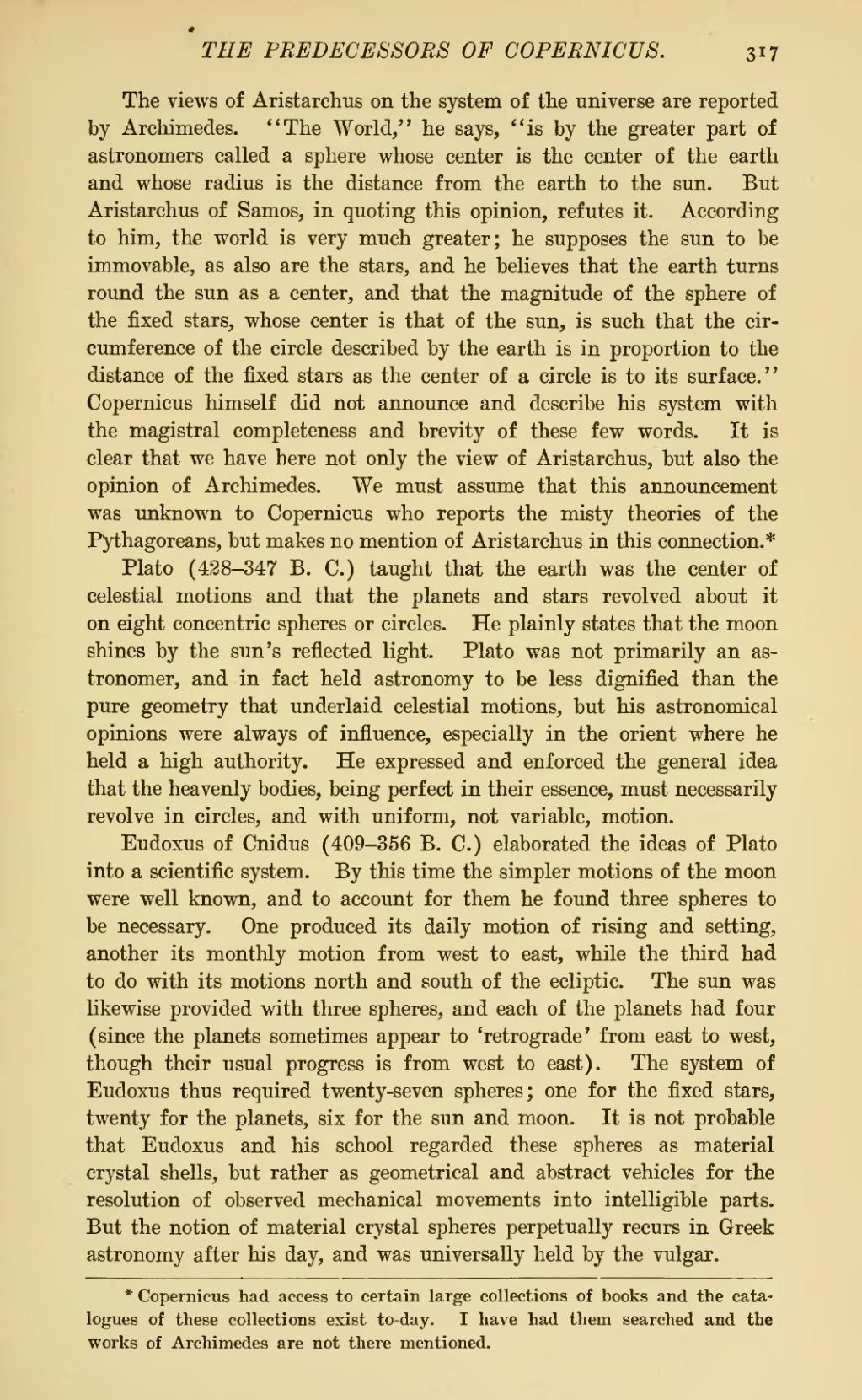The views of Aristarchus on the system of the universe are reported by Archimedes. "The World," he says, "is by the greater part of astronomers called a sphere whose center is the center of the earth and whose radius is the distance from the earth to the sun. But Aristarchus of Samos, in quoting this opinion, refutes it. According to him, the world is very much greater; he supposes the sun to be immovable, as also are the stars, and he believes that the earth turns round the sun as a center, and that the magnitude of the sphere of the fixed stars, whose center is that of the sun, is such that the circumference of the circle described by the earth is in proportion to the distance of the fixed stars as the center of a circle is to its surface." Copernicus himself did not announce and describe his system with the magistral completeness and brevity of these few words. It is clear that we have here not only the view of Aristarchus, but also the opinion of Archimedes. We must assume that this announcement was unknown to Copernicus who reports the misty theories of the Pythagoreans, but makes no mention of Aristarchus in this connection.[1]
Plato (428–347 B. C.) taught that the earth was the center of celestial motions and that the planets and stars revolved about it on eight concentric spheres or circles. He plainly states that the moon shines by the sun's reflected light. Plato was not primarily an astronomer, and in fact held astronomy to be less dignified than the pure geometry that underlaid celestial motions, but his astronomical opinions were always of influence, especially in the orient where he held a high authority. He expressed and enforced the general idea that the heavenly bodies, being perfect in their essence, must necessarily revolve in circles, and with uniform, not variable, motion.
Eudoxus of Cnidus (409–356 B. C.) elaborated the ideas of Plato into a scientific system. By this time the simpler motions of the moon were well known, and to account for them he found three spheres to be necessary. One produced its daily motion of rising and setting, another its monthly motion from west to east, while the third had to do with its motions north and south of the ecliptic. The sun was likewise provided with three spheres, and each of the planets had four (since the planets sometimes appear to 'retrograde' from east to west, though their usual progress is from west to east). The system of Eudoxus thus required twenty-seven spheres; one for the fixed stars, twenty for the planets, six for the sun and moon. It is not probable that Eudoxus and his school regarded these spheres as material crystal shells, but rather as geometrical and abstract vehicles for the resolution of observed mechanical movements into intelligible parts. But the notion of material crystal spheres perpetually recurs in Greek astronomy after his day, and was universally held by the vulgar.
- ↑ Copernicus had access to certain large collections of books and the catalogues of these collections exist to-day. I have had them searched and the works of Archimedes are not there mentioned.
